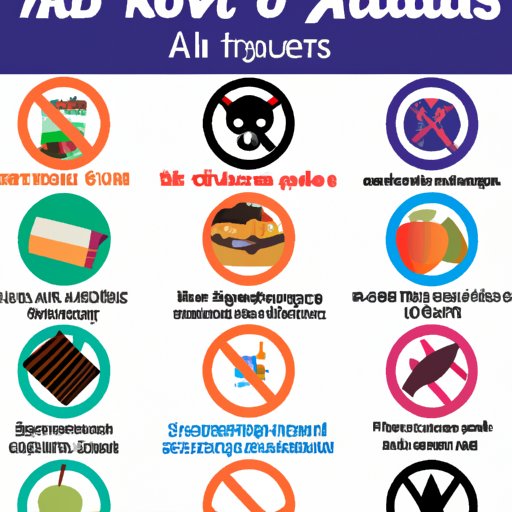Introduction
An elimination diet is a type of dietary plan that involves removing certain foods from your diet for a period of time in order to identify food sensitivities or allergies. It can also be used to improve overall health and wellness by removing unhealthy, processed ingredients from the diet. The goal of an elimination diet is to identify which foods are causing adverse reactions or contributing to poor health, and then reintroduce them one at a time to determine which ones should be avoided in the future.

Preparing to Start an Elimination Diet
Before beginning an elimination diet, it’s important to do some research and gather all the necessary information and resources. This includes reading up on the different types of elimination diets and what foods and ingredients are typically excluded from each. It may also be helpful to consult a doctor or nutritionist who can provide guidance and advice.
It’s also important to set a timeline and goals for the elimination diet. This will help keep you motivated and on track. Some people choose to do a full elimination diet for a few weeks or months before gradually reintroducing foods one at a time. Others may choose to only eliminate certain foods or ingredients for a shorter period of time. Whatever timeline you choose, make sure it’s realistic and achievable.

Foods and Ingredients to Avoid
When starting an elimination diet, it’s important to know which specific foods and ingredients to avoid. Common allergens such as dairy, eggs, peanuts, tree nuts, wheat, soy, and fish should all be avoided. Processed ingredients such as preservatives, artificial flavorings, and colors should also be avoided. Some people may also choose to avoid other ingredients such as sugar, caffeine, and alcohol.
Alternative Foods and Ingredients
Once you’ve identified the foods and ingredients to avoid, it’s important to find substitutes for them. For example, if you’re avoiding dairy, you can use almond milk, coconut milk, or other plant-based milks as an alternative. You can also find natural sources of flavorings and colors, such as herbs and spices, to replace the artificial additives found in processed foods.
Finally, it’s important to find healthy alternatives to processed ingredients. For example, instead of white flour, you can use whole wheat flour or almond flour. Instead of white rice, you can use brown rice or quinoa. By making these substitutions, you can ensure that your diet is still nutritious and well-balanced.
Strategies for Staying on Track
Sticking to an elimination diet can be challenging, so it’s important to have strategies in place to help you stay on track. Meal planning and preparation is key. Plan out your meals for the week and make sure you have all the ingredients you need. This will help you avoid any temptation to stray from the plan.
It’s also important to avoid triggers and temptations. This means avoiding places where you know you’ll be tempted to eat something off-limits. Finally, it can be helpful to track your progress by keeping a food diary or journal. This can help you see how far you’ve come and stay motivated to keep going.
Potential Health Benefits
An elimination diet can have a variety of potential health benefits. It can help improve digestion by reducing inflammation and eliminating irritants from the diet. It can also increase energy levels by providing more nutrient-dense sources of fuel. And it can lead to better overall health by removing unhealthy, processed ingredients from the diet.
Conclusion
An elimination diet can be a great way to identify food sensitivities or allergies, as well as improve overall health and wellness. It’s important to prepare adequately before starting an elimination diet, by gathering information and resources, consulting a doctor or nutritionist, and determining a timeline and goals. There are certain foods and ingredients that should be avoided, such as common allergens, processed ingredients, and artificial additives. There are also healthier alternatives to these foods and ingredients that can be used in their place. Finally, there are several strategies that can be used to stay on track with the elimination diet, such as meal planning and preparation, avoiding triggers and temptations, and tracking progress.
The potential health benefits of an elimination diet are numerous, including improved digestion, increased energy levels, and better overall health. If you’re considering starting an elimination diet, be sure to do your research and consult a doctor or nutritionist before beginning. With the right preparation, resources, and strategies, you can be successful in achieving your health and wellness goals.
(Note: Is this article not meeting your expectations? Do you have knowledge or insights to share? Unlock new opportunities and expand your reach by joining our authors team. Click Registration to join us and share your expertise with our readers.)
